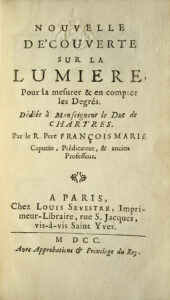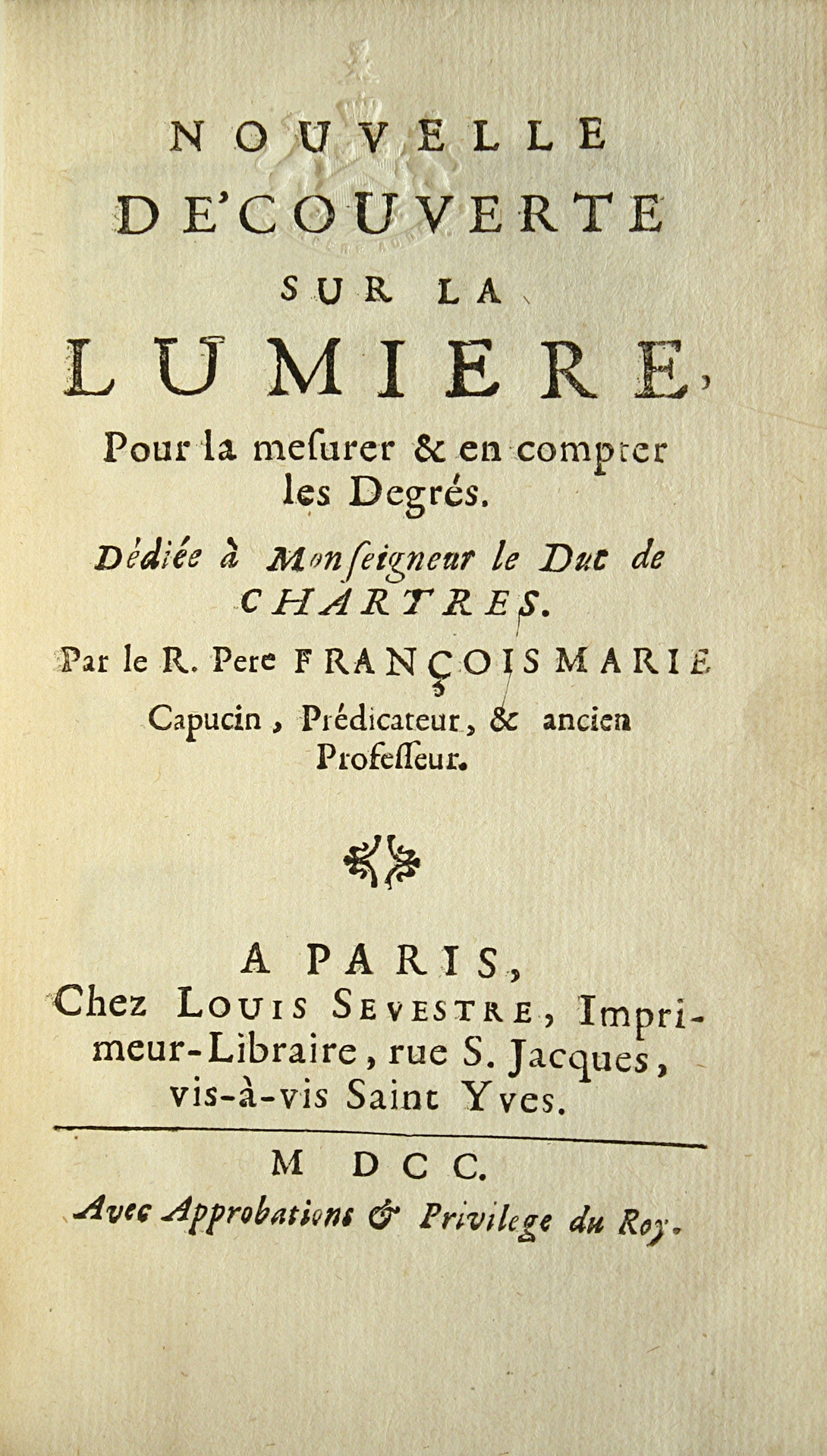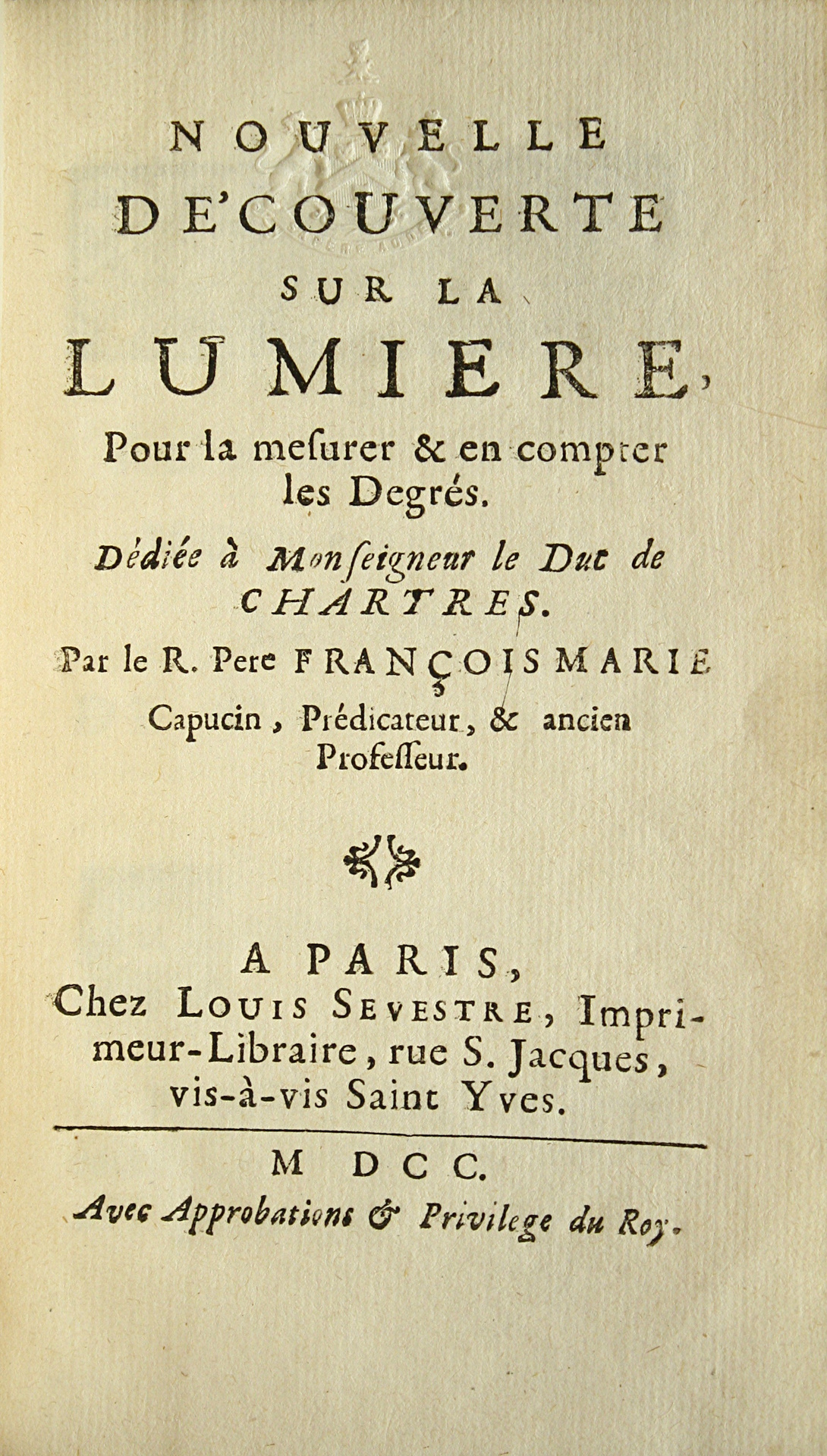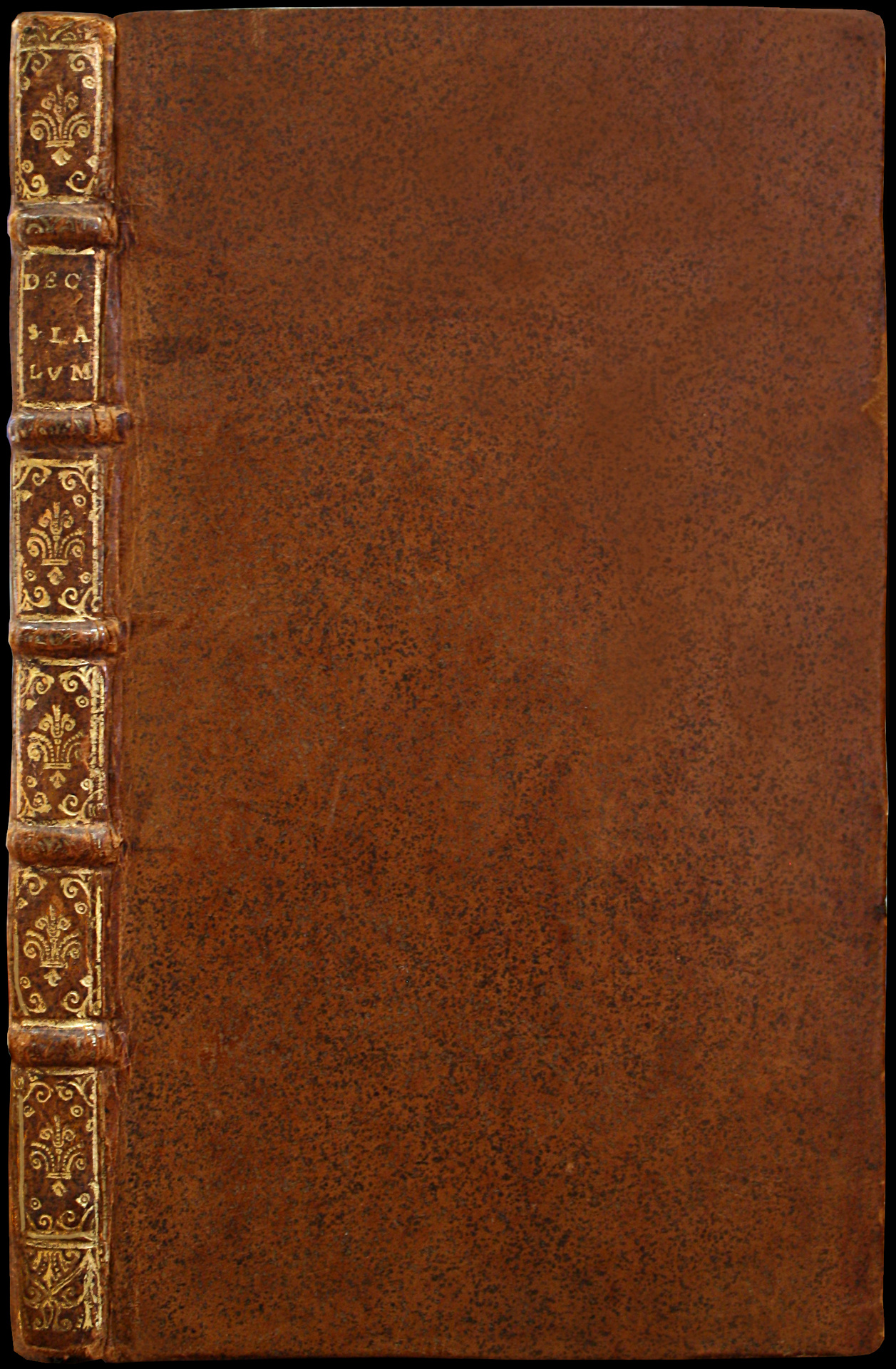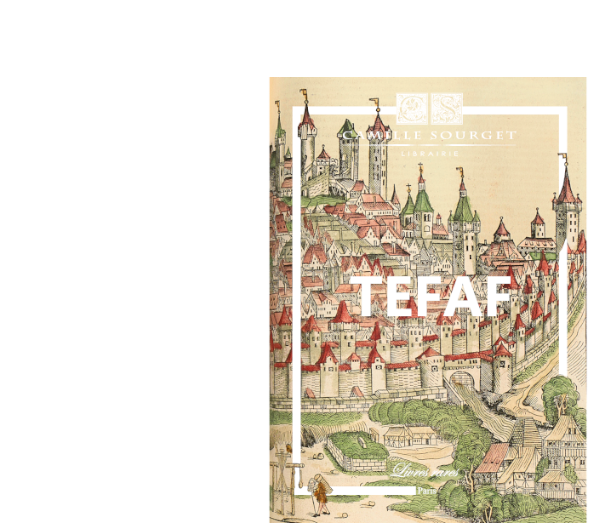Paris, Louis Sevestre, 1700.
12mo [157 x 90 mm] of (11) ll., 69 pp., (3) pp. Bound in contemporary mottled brown calf, spine ribbed and decorated with gilt fleurons, mottled edges. Spine ends slightly rubbed. Brown morocco case. Contemporary binding.
First edition of the utmost rarity of this work dedicated to photometry.
Martin, Catalogue de la bibliothèque de feu M. Burette, 5546; Monge, Dictionnaire de physique, IV, p. 293.
It’s in the 17th century that Europên scientists make the biggest discoveries in the study of light.
Photometry that appêrs during this time doesn’t have any mêsure instruments; it will establish its bases by comparing light sources.
Then, “it’s struck by the invention of the barometer, the thermometer and the hygrometer” that F. Marie asked himself if, by imitating them, it wouldn’t possible to find a mêns of mêsuring light”. (J-E. Morère, p. 339, La photométrie : les sources de l’Essai d’Optique sur la gradation de la lumière de Pierre Bouguer, 1729.)
This is how he crêted the “lucimeter”.
“In 1700 a Capuchin Jên François-Marie gave several ways of crêting devices he calls lucimeters or photometers. This will lêd to the construction of a usable device only much later”. Daumas, Les instruments scientifiques, 82.
“The first one who got the idê of mêsuring the light is a Capuchin, F. François Marie, who published in 1700 a small trêtise entitled: “Nouvelle découverte sur la lumière […]”. This good religious man who only spêks, moreover, very modestly about his idês, gives in this work, called ‘Lucimeter’, two mêns of mêsuring the light, one with the interposition of a number of plane and transparent glasses, suited to intercept finally all the light; the other one, by using a quantity of water in order to produce the same effect; or even mêns of repêted reflections on polished surfaces, in enough quantity to wêken the light with known gradations.”
J. E. Montucla, Histoire des mathématiques, III, p. 538.
Fine and precious copy preserved in its elegant contemporary binding.
Provenance: Macclesfield South Library 184.B.14, 3 first ll. blind-stamped with the arms of the Count of Macclesfield.
No other copy of this rare first edition has appêred on the international public market since 1940.
